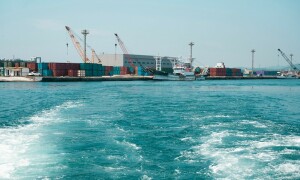Despite difficult conditions for the domestic textile industry in Pakistan, lint prices continue to increase since the past several days. With only about 300,000 unsold bales of cotton left over in the open market, the price situation of the local cotton has tightened further. Domestic textile industry is being squeezed between high cotton prices on one land and low off take of yarn on the other.
The Chairman of the All Pakistan Textile Mills Association (APTMA) S.M. Tanveer has informed that due to loss of viability, the Pakistan textile industry is suffering large losses. He added that a majority of the textile mills are considering to decrease output and work only on two shifts instead of three. Tanveer said that mills have been agitating since a long time due to declining trend in textiles and clothing exports over the past several months. APTMA has been regularly pleading with the government to intervene to devise ways and means to forestall the declining trend in the domestic textile industry.
Textile industry sources have added that they are going through a very difficult phase for several reasons. First and foremost, the Indian spinning industry is more competitive due to few energy problems. Furthermore, the support provided by the government in India due to lower interest rates and the provision of rebates provided to the textile industry in one form or the other immensely supports the Indian textile industry. In Pakistan, Chinese buying of yarns has gone down and fabric sales have also decreased. Increase in yarn prices provides some relief. Moreover, fabric off take is also slow. There are reports in the market that several mills have closed down and others may follow suit.
Most of current cotton crop (2014-2015) seedcotton in Sindh has been sold out but prevailing prices for the leftover quantity ranges from Rs 1800 to Rs 2500 per 40 Kgs, according to the quality. In Punjab, the seedcotton prices are said to have ranged from Rs 2200 to Rs 3000 per 40 kilogrammes in a tight market.
Lint cotton prices have also increased and are reportedly ranging from Rs 4700 to Rs 5400 per maund (37.32 Kgs) in Sindh which increase relates to depleting of ready domestic stocks. Punjab lint prices are said to have ranged from Rs 4800 to Rs 5500 per maund, according to the quality.
In ready cotton sales on Thursday in Sindh, 400 bales from Khadro reportedly sold at Rs 4400 per maund (37.32 Kgs), 400 bales from Tando Adam sold at Rs 4900 per maund, while 400 bales from Sukkur are said to have been sold at Rs 5200 per maund.
In the Punjab, 400 bales from Bahawalpur sold at Rs 5025 per maund, 400 bales from Ghotki sold at Rs 5400 per maund, while 1000 bales from Daharki reportedly sold at Rs 5500 per maund.
On the global economic and financial front, despite the hoopla created on the global bourses and stock exchanges, the fact remains that the American economy is still not out of the woods nor have the Eurozone countries given any indication that it will start recovering at any time in the foreseeable future. Indeed the Federal Reserve Bank of the United States has come down and thus it is debateable stated on Wednesday that the economic growth in America has whether the interest rates should be raised for the first time since the global Great Recession started in 2008.
At a recent meeting of he Federal Reserve, while some participants were of the opinion that economic data in the U.S. warranted raising the interest rate by June, 2015. They felt that the economic outlook provided a reason to increase the interest rates by the end of the second quarter (ending June 2015).
Yet there were other members of the Federal Reserve who felt that declines of energy prices and the appreciation of the greenback would adversely affect the desirable increase in inflation.
Actually, the American economy has been expected to have added 200,000 or more jobs every month as was the case during the twelve months period during the previous year ie 2014. However, as reportedly the Bureau of Statistics, the American economy added just 126,000 new jobs in March, 2015. Thus there is a strong opinion which is held by some of the members of the Federal Reserve who believe that any interest rates rise should be pushed forward till the end of 2016.
The Eurozone remains a large region when any economic recovery remains tentative and of modest proportions. Besides the dilemma of Greece, Spain, Portugal, Italy and other peripheral countries are still showing tentative and contentious economic progress.
In a recent report from Berlin, the factory orders in Germany have declined again in February, 2015 which has disturbed the economic analysts who were looking forward towards a rebound in Europe's top most economy. AFP has reported from Berlin on last Wednesday that "Provisional official data showed a 0.9 percent month - on - month decline, following a sharp 2.6 percent drop in January (2015), according to revised figures". Earlier analysts had estimated the German industrial growth at 1.5 percent for February, 2015.
These and other economic and fiscal developments around the world, besides a modest global improvement, still do not show a convincing upturn which would pull out the current Great Recession into a more heartening projection and progress.
BR100
12,588
Increased By
72.3 (0.58%)
BR30
37,879
Decreased By
-72.9 (-0.19%)
KSE100
117,316
Increased By
414.5 (0.35%)
KSE30
36,116
Increased By
183.7 (0.51%)




















Comments
Comments are closed.